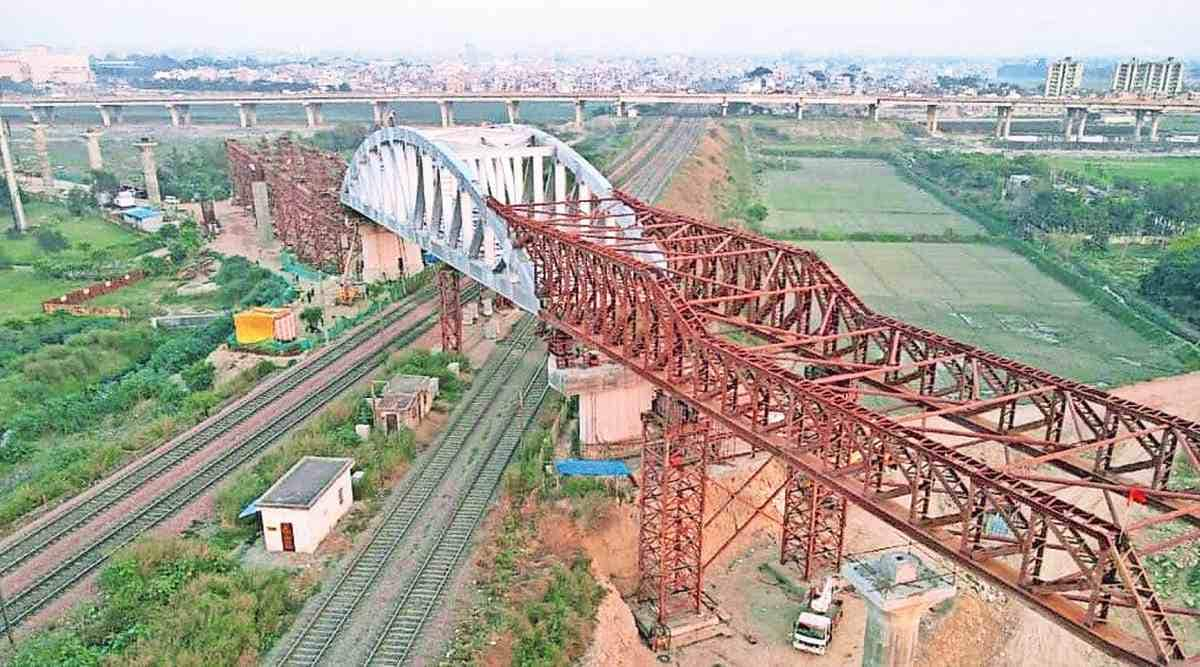 These precast track slabs are being manufactured at a factory in Shatabdi Nagar in Uttar Pradesh's Meerut under the Make in India initiative. (Express Photo)
These precast track slabs are being manufactured at a factory in Shatabdi Nagar in Uttar Pradesh's Meerut under the Make in India initiative. (Express Photo) To have an efficient and qualified rail track system to run the high-speed rapid rail, the National Capital Regional Transport Corporation (NCRTC) has decided to construct a unique Precast Slab Track System for the upcoming Rapid Rail Transit Corridor (RRTS), officials have said.
The technology is being used for the first time in India in the construction of the first regional rail of the country. The Precast Track Slab technology produces high-capacity ballastless track slabs that have a longer life cycle and require less maintenance. Due to this, the overall life-cycle cost of the track is also low.
“RRTS project aims to significantly reduce the travel time, it is ultimately very important that the design of the selected track structure is suitable for high speed. It should be reliable and easily maintainable. The RRTS corridor is passing through the congested urban environment as elevated as well as the underground corridor. The selection of the ballastless track structure has been finalised after considering all these key factors,” said a senior NCRTC official.
Officials said the existing ballastless track system being used in Metro rail projects in India is generally suitable for design speeds of up to 95 kmph. In the absence of high-speed ballastless track experience in the country, NCRTC studied several internationally prevalent rail track systems to select an apt track system suitable for high speed, be reliable with low maintenance.
These precast track slabs are being manufactured at a factory in Shatabdi Nagar in Uttar Pradesh’s Meerut under the Make in India initiative. The size of these track slabs are 4 m x 2.4 m in size and use elastomer as a separation layer.
On average 90 precast track slabs are manufactured daily in this factory. A total of about 42,000 precast track slabs will be produced for the entire Delhi-Ghaziabad-Meerut corridor, whereas for the priority corridor only, about 9,000 track slabs are being made.
NCRTC has adopted the strategy of implementing uniform track structure across its different corridors and this precast track slab technology will be used for all under construction and upcoming RRTS corridors.
“With the help of this track slab technology, NCRTC will be able to run high speed and high-frequency RRTS trains and ensure safety and comfort of passengers during operation with design and average speed of 180 kmph and 100 kmph respectively,” said the official.
The rapid rails will be high-speed trains which will run at a maximum speed of 160 kilometres per hour and a minimum speed of 100 kmph. The first RRTS corridor will connect Delhi’s Sarai Kale Khan directly to UP’s Meerut via Ghaziabad in just 50 minutes. Currently, it takes three to four hours to reach Meerut by bus.
- The Indian Express website has been rated GREEN for its credibility and trustworthiness by Newsguard, a global service that rates news sources for their journalistic standards.

